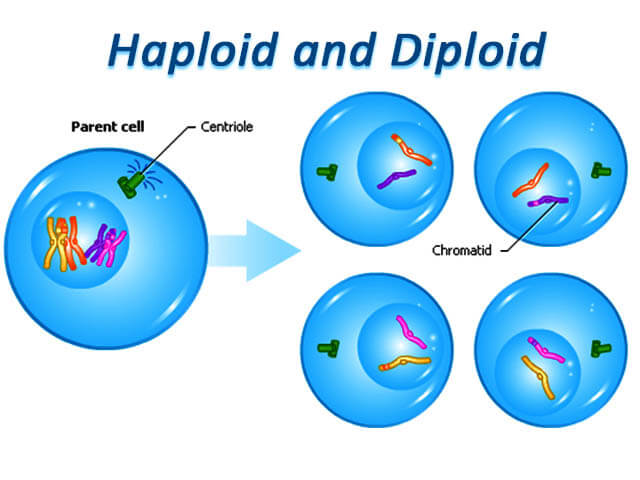Haploid and Diploid cells
What are Haploid and Diploid cells before knowing that we must know what is cell and Organization cell if we know this only then we can understand what are Haploid and Diploid cells? The basic structural and functional unit of life is called a cell.
We all are made cells. In a unicellular organism, all functions related to life are performed by single cells like digestion, respiration, and reproduction. In the Human body, there are 30 trillion cells.
What are Haploid and Diploid cells?

What are Mitosis and Meiosis?
All multicellular organisms start their life from a single cell. Then this single-cell divides to form two cells and two cells form four cells and the process continues. In this way, multicellular organisms arise from a single cell.
Now the question is that how cells divide. The cell division is of two types 1) Mitosis and 2) Miosis
Cell division occurs only in two cases first is “Growth of living organism and in repairing damage cell” and the second is “Reproduction.”
What is a Diploid Cell?
In the case of growth, One cell divides to form two new cells. In this case, the two newly form cells (Daughter cells) contain the same number of chromosomes as in the original cell (Mother cell) this type of cell division is called Mitosis and cells are called diploid cells.
The diploid cell contains two sets of chromosomes one from the father’s side and the other from the mother’s side.
In the human cell, there is a total of 46 chromosomes out of which 23 are from the father and 23 are from the mother. all cells in the human body are diploid cells except sperm and ovum.
What is a Haploid Cell?
In the case of Reproduction, the specialized cell of the reproductive system divides to form gametes. The cell of the reproductive system divide by a special process called Miosis.
In Miosis the mother cell divides to form four daughter cells which contain half the number of chromosomes than that of the mother cell. These four cells are called haploid because they contain half the number of chromosomes than that of the mother cells.
We know that human cells contain 46 chromosomes, but human gametes cells such as sperm of male and ovum of a female contain only 23 chromosomes. Which is half the number of chromosomes present in the human body.
Hence gametes cells are called haploid. Now we will be distinguished between haploid and diploid
Difference between Haploid and Diploid Cells
| Haploid | Diploid |
| The haploid cell contains only one set of chromosomes | The diploid cell contains two sets of chromosomes |
| Miosis results in the formation of haploid cells | Mitosis results in information of diploid cells |
| In a Higher organism, haploid cells are sex cells such as sperm or ovum | In a Higher organism, diploid cells are all the cells in the body except the sex cell |
| The example of Haploid cells are Sperm and ovum | The somatic cells like blood cells. Muscle cell and neurons are Diploid cells |
| The haploid cells are not similar to the mother cell they contain half the number of chromosomes as the mother cell | The diploid cells are identical to the mother cell they contain the same number of chromosomes as in the mother cell. |
Quiz on about Haploid and Diploid Cells
- How many chromosomes are present in human cells? Ans: Human cell contains 46 chromosomes.
- How many chromosomes are present in the gametes cell of human beings? Ans: the game’s cells of humans are haploid hence they contain 23 chromosomes.
- Give an example in which a diploid cell is formed by haploid cells. Ans: The sperm cell of a male which contains 23 chromosomes when fertilizes Ovum of the female which contains 23 chromosomes and then zygote is formed which is diploid cell it contains 46 chromosomes 23 from the father side and 23 from the mother side.
- What is the significance of haploid cells? Ans: Haploid cells are involved in sexual reproduction and are responsible for genetic diversity.
- What is the significance of diploid cells? Ans: The growth and development of organisms are due to diploid cells.




